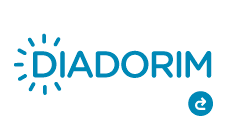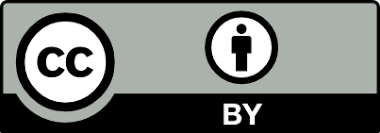"THE CONQUEST OF THE CELL NUCLEUS": THE PROPOSAL OF A PLAYFUL GAME OF CYTOLOGY (CELULAR BIOLOGY) IN THE DISCIPLINE OF BIOLOGY
Abstract
In high school, the teacher is constantly faced with the challenge of making the content increasingly pleasurable and thought-provoking, allowing students to understand the subjects in a more facilitating way. However, in disciplines such as Biology, there is a large amount of content, with many abstract terms and processes that must be very well contextualized by students. Thus, the main objective of this work is to propose a playful game to facilitate students' learning in the subject of Cytology for students of the discipline of Biology in high school. The game is based on a board that simulates the scenario of the cytoplasm of an animal cell. Students go through the squares on the board, answering different types of questions, ranging from simpler or even more challenging, allowing students to apply in practice what was contextualized in theory. The team that reaches the cell core first, answering all the correct questions, in addition to the “Final” question, wins. Thus, it is expected that with this methodological dynamic, the teaching of Cell Biology (Cytology) can be better accepted by students, making the search for knowledge a dynamic, relaxed and pleasurable task.
Downloads
References
ALBERTS, B. et al. Fundamentos da Biologia Celular. 4ª ed. Artmed, Porto Alegre, 838p. 2017.
GONÇALVES, T. M. GNIECK KARASAWA, M. M. G. “MUTA-AÇÃO: A proposta de um jogo lúdico sobre mutações e síndromes genéticas nas disciplinas de biologia molecular e genética clássica. Revista Arquivos do Mudi. v. 25, n. 1, p. 44-45, 2021.
KRASILCHIK, M. Prática de Ensino de Biologia. Edusp, São Paulo, 199p. 2004.
MENDES, S. C.; GOMIDES, A. F. F. A utilização de jogos como recursos didáticos facilitadores no ensino de Biologia para alunos do ensino médio. Revista de Educación en Biología, v. 23, n. 1, p. 64-78, 2020.
MIRANDA, S. No fascínio do jogo, a alegria de aprender. Ciência Hoje, v. 28, p. 64-66, 2001.
OESTREICH, L.; GOLDSCHMIDT, A. I. O ensino de biologia celular: uma análise em eventos da área. # Tear: Revista de Educação Ciência e Tecnologia, v.10, n. 1, p. 1-20, 2021.
PIXABAY (2021). Mitocôndria. Disponível em: https://pixabay.com/pt/illustrations/mitoc%c3%b4ndria-celular-biologia-258212/
REIS, A. P. et al. Diversificação do ensino em Genética e Citologia visando melhor aprendizado e diminuição da retenção e evasão. Brazilian Journal of Development, v.7, n.3, p. 25696-25709, 2021.
ROCHA, F. D.; RODRIGUES, M. S. Jogo didático como facilitador para o ensino de BIOLOGIA no ensino médio. CIPPUS, v. 6 n. 2, p. 1-8, 2018.
SADAVA, D. et al. Vida: A Ciência da Biologia. Volume I: Célula e Hereditariedade. 8ª. ed. Artmed, Porto Alegre, 461p. 2009.
SINGER, S. J.; NICOLSON, G. L. The Fluid Mosaic Model of the Structure of Cell Membranes. Science, v. 175, n. 4023, p. 720-731, 1972.
SOUSA, A. S.; OLIVEIRA, F. C. S. VIERIA, F. J. Jogos e modelos didáticos, associados à aula expositiva dialogada, no ensino de Citologia. Experiências em Ensino de Ciências. v. 16, n. 1, p. 195-211, 2021.
TRIVELATO, S. F.; SILVA, R. L. F. Ensino de Ciências, 1ª edição, São Paulo: Cengage Learning, 135p. 2011.
WIKIMEDIA COMMONS (2021a). Anatomy and physiology of animals structure plasma membrane. Disponível em: https://commons.wikimedia.org/wiki/File:Anatomy_and_physiology_of_animals_structure_plasma_membrane.jpg
WIKIMEDIA COMMONS (2021b). Golgi Body. Disponível em: https://commons.wikimedia.org/wiki/File:201601_golgi_body.png
DECLARAÇÃO DE ORIGINALIDADE E DIREITOS AUTORAIS
Declaro que o presente artigo é original, não tendo sido submetido à publicação em qualquer outro periódico nacional ou internacional, quer seja em parte ou em sua totalidade.
Os direitos autorais pertencem exclusivamente aos autores. Os direitos de licenciamento utilizados pelo periódico é a licença Creative Commons Attribution 4.0 (CC BY ): são permitidos o acompartilhamento (cópia e distribuição do material em qualqer meio ou formato) e adaptação (remix, transformação e criação de material a partir do conteúdo assim licenciado para quaisquer fins, inclusive comerciais.

Recomenda-se a leitura desse link para maiores informações sobre o tema: fornecimento de créditos e referências de forma correta, entre outros detalhes cruciais para uso adequado do material licenciado.

















